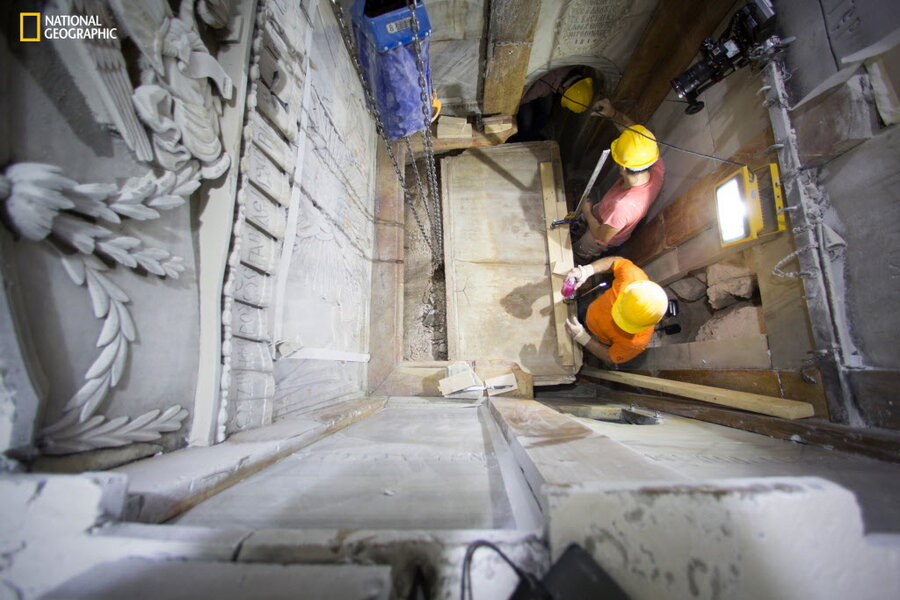Jesus' Tomb opened: What did we learn so far?
Loading...
For the first time in at least 500 years, archaeologists removed the marble covering from Jesus Christ’s supposed burial bed.
The unveiling was part of a $4 million effort to restore the Edicule, a structure within Jerusalem’s Church of the Holy Sepulchre that houses the gravesite. Researchers replaced the slab, which was installed around 1555 to prevent pilgrims from taking souvenirs, after just a few moments. But the 60-hour restoration, which began on Wednesday, may turn up more than just marble.
"We are at the critical moment for rehabilitating the Edicule," chief scientific supervisor Antonia Moropoulou, of the National Technical University of Athens, told National Geographic. "The techniques we're using to document this unique monument will enable the world to study our findings as if they themselves were in the tomb of Christ."
After some initial inspection, researchers feared that only fill material lay beneath the marble cladding of the burial bed. But on Friday, they found the original limestone slab intact.
"I'm absolutely amazed. My knees are shaking a little bit because I wasn't expecting this,” Fredrik Hiebert, National Geographic's archaeologist-in-residence, told National Geographic. "We can't say 100 percent, but it appears to be visible proof that the location of the tomb has not shifted through time, something that scientists and historians have wondered for decades."
The restoration also turned up pieces of the tomb’s original limestone wall, as well as a cross-engraved marble slab that may date back to the Crusades. Researchers hope that analysis of graffiti carvings may help date previous excavations.
The current Edicule was constructed around 1810 and has drawn a steady stream of pilgrims ever since. But the original structure was built much earlier, some 300 years after Jesus’ death.
The Christian Science Monitor’s Ellen Powell reported:
The history of the Edicule goes all the way back to Constantine, the first Roman Emperor to convert to Christianity. After conversion, he reportedly dispatched his mother, Helena, to Jerusalem, where locals pointed out a cave believed to be the site where Jesus lay for three days after his crucifixion. According to Christian tradition, he was resurrected after that time and later ascended… Helena reported the location to Constantine, who constructed the original Edicule (from the Latin meaning “little house”) over the cave to mark the spot for future generations.
That building, which has since been destroyed and rebuilt, is housed within the Church of the Holy Sepulchre. The church itself falls under the custody of six Christian denominations. Three of those sects – the Greek Orthodox Church, the Roman Catholic Church, and the Armenian Orthodox Church – exercise jurisdiction over the gravesite, but regulation of the tomb requires the consent of all six.
"I'm glad that the atmosphere is special, there is a hidden joy," Thephilos III, the Greek Patriarch of Jerusalem, told National Geographic. "Here we have Franciscans, Armenians, Greeks, Muslim guards, and Jewish police officers. We hope and we pray that this will be a real message that the impossible can become the possible. We all need peace and mutual respect."






